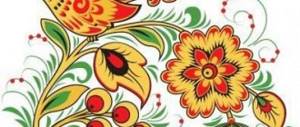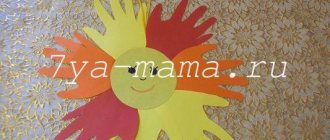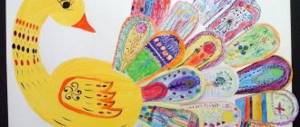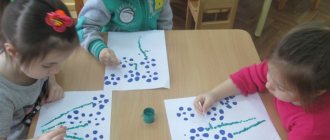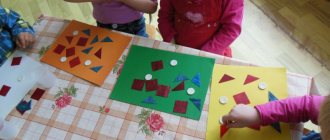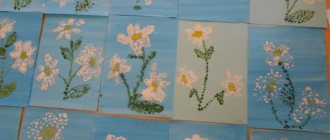Drawing with soap bubbles is a fascinating and unusual children's game. Such entertainment allows you not only to have an interesting time, but also to develop certain skills and abilities in your child.
To draw, you will need simple tools and materials.
It is recommended that you first familiarize yourself with the master class on creating original drawings.
Required materials and tools
Children really like drawing with soap bubbles. This activity is suitable for girls and boys. The drawings turn out to be quite unusual. This type of drawing is useful for children of all ages. Pediatricians especially recommend this activity for children with mental retardation.
The activity brings the following benefits to children:
- stimulates the development of abstract thinking;
- Teaches correct color perception. Thanks to the use of paint, bubbles of certain shades can be obtained. This allows the baby to better perceive and distinguish colors;
- trains the imagination. The child examines the bubble mark and thinks about what it looks like;
- develops creative abilities;
- motivates the child to take initiative.
To draw something with soap bubbles, you will need to prepare a number of materials and tools in advance.
You will need the following:
- gouache or food paints;
- detergent (baby shampoo or liquid soap);
- water;
- cocktail straws;
- thick paper;
- disposable plastic cups or other small containers;
- napkins;
- newspaper or oilcloth.
In the process of drawing with bubbles, each time the print turns out different. This allows you to experiment and imagine.
How to draw soap bubbles (step-by-step instructions with photos), option 1
For drawing you will need the following materials and tools:
- dark colored paper or cardboard (black, dark blue, dark purple or dark green),
- templates for drawing circles (you can take cups, glasses, glasses, lids, coins, etc. of different diameters),
- Oil pastels or chalk markers work best for drawing, but colored pencils will do in a pinch.
The size of the paper is not important: you can draw on a standard sheet of colored paper or cardboard for children's creativity, whole or cut into 2 or even 4 parts.
If you plan to work together, you can glue together the children’s drawings and add a few bubbles at the joints to make the drawing look more harmonious. The finished work will decorate a kindergarten group, as well as a classroom, staircase or corridor at school.
Drawing with colored pencils
When drawing soap bubbles with colored pencils, it is very important that:
- the drawing paper or cardboard was rough and in no way glossy,
- among the pencils there was always a white pencil,
- pencils should be very soft, for example, 2M-4M, but even better - watercolor pencils.
Stages of work completion
- Use a white pencil to outline the lid (mug, glass). Thus, draw circles of different diameters. Draw several circles intersecting.
- Using a colored pencil of any color, draw two small arcs opposite each other inside each circle near its outline. Next to each arc, draw another one, but of a different color. You can draw two multi-colored arcs on top and bottom of each circle, and you can also draw on the sides.
- Use a white pencil to draw a highlight (it can be in the shape of a crescent).
As expected, the drawing with colored pencils turned out pale and dull.
Oil pastel drawing
When painting with an oil bed, the same stages of work are performed, but the drawing is brighter. By the way, when drawing, instead of highlights or together with them, you can draw a couple of thin white arcs.
Drawing with chalk markers
When drawing with chalk markers, the drawing also turns out bright (even though our markers are almost dry).
For comparison, all the results of the artistic experiment are in one photo (colored pencils and chalk markers on top, oil pastels on the bottom).
Master class on drawing for children
To teach a child to draw, parents must first master this technique. It is recommended to watch the training video first and then practice.
A master class on drawing with soap bubbles can be found on the Internet. This activity is quite simple and interesting. First you need to prepare the solution.
For this purpose, you should mix detergent and water in a ratio of 1:5. Next, you need to pour the mixture into containers and add dyes of different colors to each container. The saturation of the shade on the paper depends on how much paint is used.
If you want to make bright prints, then you should use this recipe:
- take 300 ml of boiled or distilled water, 50 ml of glycerin, 100 ml of shampoo or gel, two tablespoons of sugar;
- mix all components;
- pour the composition into plastic cups;
- add a coloring component to each container.
Next, you need to take a cocktail tube and shake the solution with it. Without removing it from the glass, you should blow into it. The solution should begin to bubble.
You can draw in two ways:
- spooning bubbles onto paper;
- placing the cardboard on the bubbling solution.
On one sheet you need to draw soap bubbles of various shades. Prints can be made at a certain distance from each other or overlapping one on top of the other. To get large circles, you need to pour the soap-color solution into a bowl, cup or deep plate. When the print on paper dries, you will get an interesting watercolor painting.
To make a more complex print, you need to use several cocktail straws. They need to be connected together, dipped in a soapy solution and blown into them.
Drawing with a soap-coloring composition is sometimes organized by teachers in kindergartens for junior and senior groups. This activity can also be done at home.
What can you make from bubble paper in kindergarten?
Drawing with soap bubbles for kindergarten children of the younger group involves making imprints on paper and further studying them.
One child may see an image of a flower on a sheet of paper, another - the sun. The teacher should encourage the child's imagination. This develops the imagination well. Drawing with soap bubbles in the older group follows a more complex program: it is proposed to make something interesting from painted paper. This stimulates the development of thinking.
Multi-colored paper with soap patterns can be used in the following ways:
- as a background for creating applications, drawings, postcards. In this case, you need to complete the individual details with paints or pencils. As a result, images of various objects, plants, and creatures can be obtained from soap prints;
- for gift wrapping. You can make a beautiful bag from thick paper painted with soap and paint;
- for the production of certain parts for appliqués.
Lesson on visual arts in the younger group on the topic: “Inflate, bubble”
Publications on the topic:
Photo report of a visual arts lesson on the topic: “Transport” Good afternoon, dear friends! I bring to your attention a photo report of a visual arts lesson on the topic: “Transport”. Goal: continue.
Summary of a lesson in visual arts in the preparatory group on the topic “Poultry Yard” Goal: to expand children’s ideas about poultry and their chicks. Objectives: • expand ideas about poultry and their chicks (features.
Summary of a lesson on visual arts in the second junior group on the topic “Let's go to the Magnit store.” Educational area: artistic and aesthetic Type of activity: visual (applique) Age group: second junior group.
GCD for visual activities in the senior group on the topic “Composition” OBJECTIVES: To teach how to choose the correct size and format of a sheet for work, to correctly position the drawing and fill it with color, to highlight the main thing.
Fine art project on the topic: “Wild Animals” Fine art project on the topic: “Wild Animals” (Use of non-traditional drawing techniques in the development of creative abilities.
A lesson on experimental activities in the first junior group of a kindergarten on the topic “Properties of Water” Program content: -To form children’s ideas about the physical properties of water. - Bring to an understanding of what water has.
Lesson on visual activities in the middle group “Girl dancing” Topic: “Girl dancing” Purpose: To develop children’s skills in drawing a human figure, composing an image from simple parts: a round head, a girl.
A lesson in visual arts in the second junior group on the topic: A tender, first little white flower grew from under the snow. A lesson in visual arts in the second junior group on the topic: “A tender, first white flower grew from under the snow...” Objectives:.
Lesson in the preparatory group on fine arts on the topic: “White cap, striped collar.” Lesson in the preparatory group on fine arts (drawing) on the topic: “White cap, striped collar.” Tasks:.
Lesson in the senior group "Zoo" on visual activities. Summary of a lesson in drawing in the senior group "Zoo". Program content: • Teach children to independently set goals based on the problem;.

